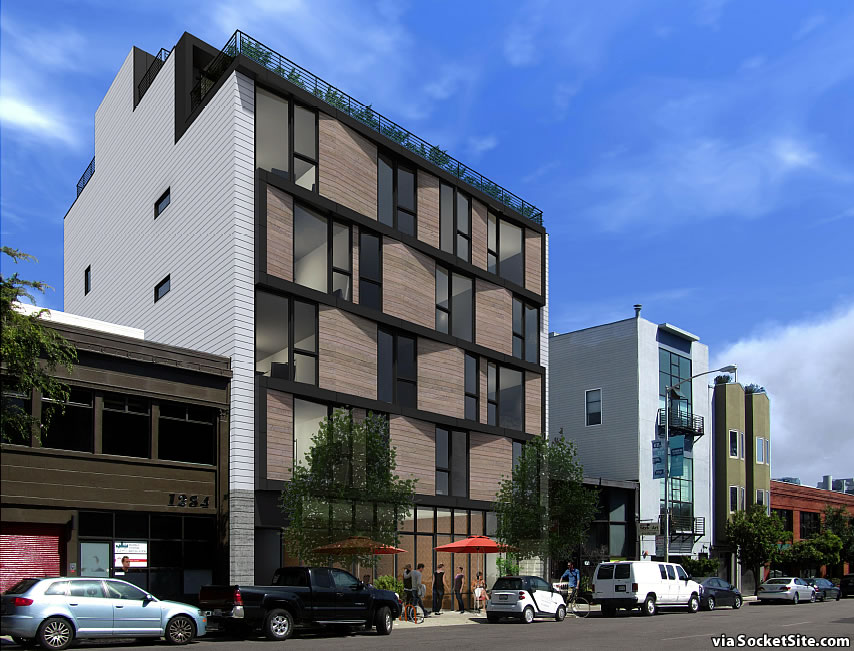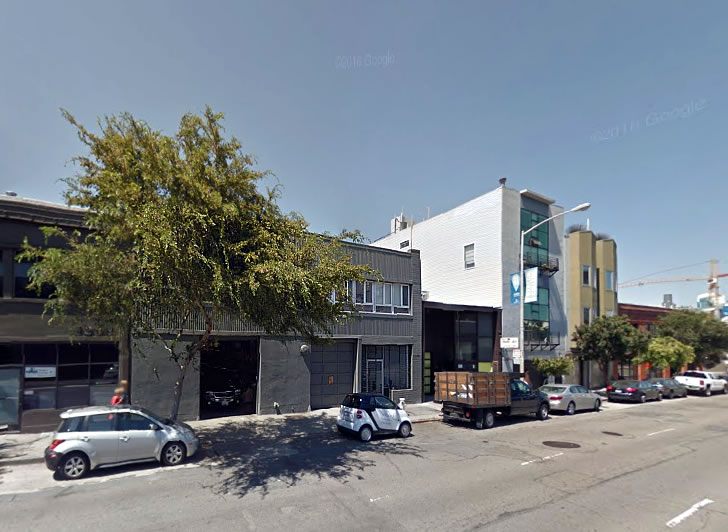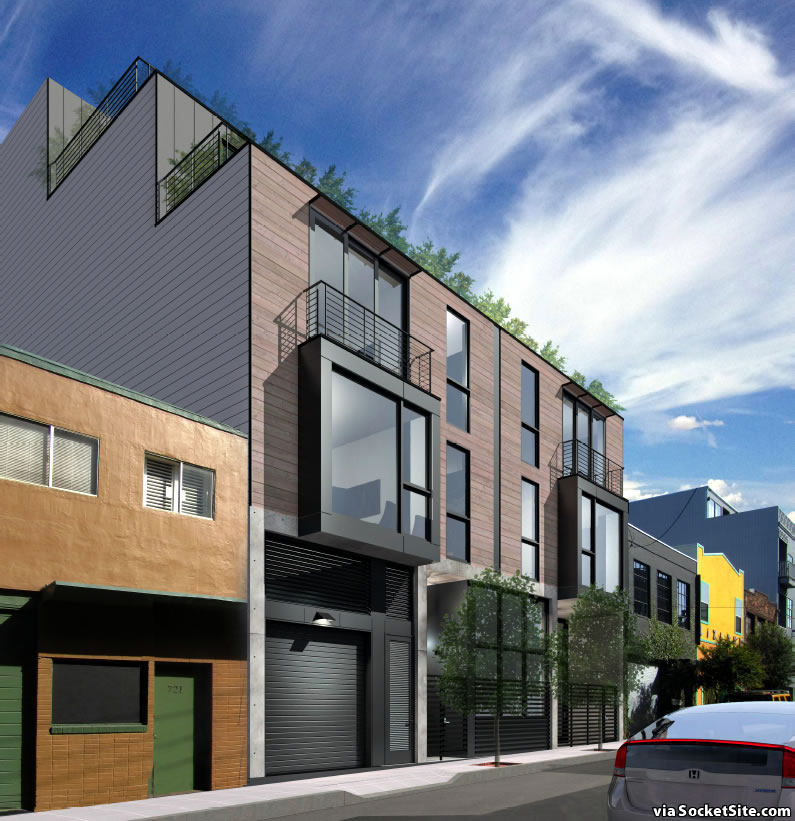While the Planning Commission hearing for the proposed 24-unit building to rise up to six stories in height at 1228 Folsom Street has been delayed until the first week of January, the project has just been granted its Western SoMa Neighborhood Plan-based exemption from having to complete a resource intensive environmental impact report (EIR).
As we first reported about the Western SoMa project back in 2014, the proposed building would stretch from Folsom to Clementina Street, stepping down to four stories along the way and providing the entrance to the building’s 15-car underground garage.
And as designed by RG-Architecture, the proposed project includes a 1,100-square-foot commercial space fronting Folsom Street.
One other thing we’ll note, the project team recently met with Planning to discuss the fact that the proposed project lies in a known liquefaction zone, as do its neighbors.



What’s with all these EIR exemptions?
Simply means it complies with the Western SOMA Plan, so it is exempt from additional studies. Nothing conspiratorial going on.
When a neighborhood plan is prepared, and EIR is prepared on the plan. If a developer meets the conditions studied in that EIR, he gets an “exemption”. There is no reason to do another EIR, it has already been done.
Gotta love the first response here. The mentality of so many in this city…
And if we didn’t have CEQA or the EIR system we have, nearly everyone now using CEQA/EIR or considering it in their mind when reading about things would not in fact automatically think the way they do now.
If we could get rid of CEQA’s ability to be applied to urban projects and reform the EIR process, I fully suspect that so many people who now follow all the permitting and all the projects in the city in order to do their civic duties in seeing if something “seems” illegal or suspect under the current system, if we didn’t even allow them the avenue simply by making the system more autonomous and subject to a little less oversight, we’d probably see little change in how many proposals make it through the pipeline and into permitting, and probably little change at this point to the high value of land (which is why we’ll never see a Houston level of activity), but I think that upfront costs for developers could be reduced (gasp I guess that means someone earns a higher profit assuming LP promote structures, concepts foreign to everyone in SF who complains about these projects, get reworked to account for reduced risk or higher margins/IRRs), and the mere difference is simply time to shovel.
Eliminating CEQA’s urban applicability and simple reforms to EIR process still wouldn’t:
1) Transform people’s politics about things
2) Our vote by ballot system
3) City’s arcane planning process otherwise, and arguable inequities in the Planning Commission’s and the BoS’s decisions impacting individual deals
4) The cost of construction right now
5) Available land to suit size/scope project developer looking to do
6) City’s inequitable use of spot zoning and generally conservative zoning as related to scale
7) Regional feuding and all that results
8) Fractured city/regional transit agencies and other authorities that reinforce the feudalism we are subject to
The obstacles to build something are still endless, even if we didn’t have those two other costly, time-consuming barriers.
Mr. Simmons, thank you for speaking the truth clearly. The reason for this panoply of iniquities is the progressive’s war on the middle class. If the city were to allow market rate housing construction without myriad obstacles, the city would be more affordable for everyone due to competitive market forces. Secretly but certainly, the progressives in control of politics in SF don’t want that, no matter how expensive it gets.
UPDATE: Approved Development on the Market in Western SoMa